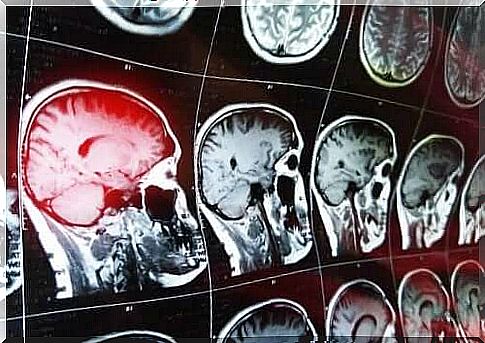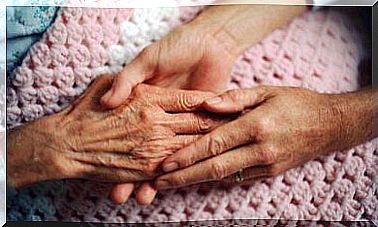What Are Confabulations And Why Do They Occur?

It is important to know that confabulations stem from the disturbance of memories, in order to understand what they are. This is because memory is one of the things that has been studied most in the human, cognitive process. However, it remains a complex subject.
Events in your memory are not an exact reconstruction of events. Each person can remember an event in a certain way and be sure that this is how it happened. It is a deformation of reality due to the loss of information.
A clear example occurs in older people who suffer from major neurocognitive disorders (senile dementia). They are convinced that they have experienced things in a completely different way than the actual events.
Types and classification
Confabulations are a cognitive phenomenon that is difficult to characterize when one considers that they can manifest over several days. However, there are five criteria for classifying these cognitive changes.
Let’s take a look at them.
Spontaneous confabulations
The first type of confabulations are short. It is an imaginative thought that is considered to be real by a particular person, in a very unique way. It usually occurs in patients with Korsakoff’s syndrome.
Provoked confabulations
In this case, what happens is that the memory fails to evoke something accurate. It is common in people suffering from amnesia. Something similar happens when a healthy person tries to recall some information in a forced way for a long time.
For example, studying for an exam in a textual way can lead to problems recalling memory. Some concepts may be confused and claimed to be true while the test is going on, even if they do not correspond to reality.

3. Simple, provoked disturbances
These disturbances occur when a person has to remember information in detail. Let’s imagine for a moment that you forget your shopping list and you try to remember what it says. You may be unknowingly buying something that was not on your list, and you are still convinced that it was on the list.
Temporary confabulations
This type of memory failure is one of the most common forms of confabulation, and the stories can be incredible but perfectly believable.
Furthermore , these are easier to detect. When a patient, for example, talks in detail about his plans, but they are not conceivable at all. It is common for some elderly people in nursing homes to claim that they want to visit their childhood friends, even though they may have already passed away.
Incredible confabulations
This type of confabulations are the most intense due to the high attachment to reality of these peoples. As the name suggests, these are incredible stories that are only believable to patients. Moreover, these changes in reality are common in psychotic patients and those suffering from paralytic dementia.
Another classification
This classification of the five types that you can see above has been put forward by Kopelman and it is the most accurate in determining the intensity and frequency of confabulations. Another method that has been used over the years is the one put forward by Schnider, which consists of four criteria:
- Content: Establishing how plausible the explanation can be by using boundaries that range from true to false.
- The way they occur: Are they spontaneous or provoked?
- The terrain in which they arise: Are they episodic, autobiographical, overall semantic or personally semantic?
- The clinical syndrome in which they occur.
What symptoms are related to confabulations?
The symptomatology of confabulations varies depending on the underlying disease causing them. The most characteristic symptoms of Alzheimer’s disease are, for example, cognitive deficits, mental decline and memory problems.
Let’s look at what else can occur depending on the neurological disorder:
- Dementia is about a weakening of memory with nervousness.
- Schizophrenia is a thought disorder, acoustic hallucinations and paranoia.
- Korsakoff’s syndrome is the loss of recent memory, mania and repetitive behaviors.
- Asomatognosy is the inability to integrate one’s body parts or to recognize them. There are false sensations associated with the loss of limbs.
The possible causes of confabulations
The causes of the memory failure that creates confabulations in patients are the result of an injury to the frontal area of the brain. In particular, the area where the orbitofrontal and ventromedial areas are located is affected.
There are three theories that try to explain the reasons why confabulations occur. We will now review which ones it is about. This is because it is important to know the hypotheses that come from a neuropsychological perspective.
1. Memory malfunction
This theory claims that confabulations are a form of amnesia. Furthermore, the primary postulate claims that problems with recalling memory are a way of giving meaning to the incomplete memories one can remember. There is an overall approval of this hypothesis.
2. Executive dysfunction
This theory claims that memory failures that give rise to confabulations occur when there are severe mental limitations according to planning and setting specific goals.
3. Double hypothesis
In this hypothesis, the approach does not exclude any of the earlier postulates. In fact, it maintains that confabulations are due to a lack of executive processes (higher functions of consciousness) in addition to memory failure .
Treatment of confabulations

Confabulations are considered to be a side effect that cannot be treated. However, there is an approach that makes it possible to improve the quality of life of those patients who confabilate after sustaining a brain injury. For that reason, this neuropsychological procedure is based on confrontation as a means of cognitive stimulation.
Researchers at the University of Canada have designed this treatment. It consists of showing patients a series of pictures. The sequence of images can vary in content, and then the researchers ask them to recall what they saw. Confabulations occur when these people try to remember, and this is where the specialists interpellate.
They have to emphasize to their patients that the memory they claim is true is not, and then they show them the pictures again. Of course, they explain to them that their memory is deficient, which is referred to as feedback in neuropsychology. One can expect an improvement after about nine weeks.
What to do if you know someone who suffers from confabulations
The best thing to do is not to insist abruptly that you are wrong if you know someone who is confabulating. You need to keep in mind that these facts are real to him or her. Therefore, you need to show empathy and avoid stressing the person further.
The next thing is to consult a specialist who can evaluate him or her and determine the intensity of the injury to establish the path that should be followed. Some patients stop confabulating after some time and do not need hospitalization.









